Corporate Grooming
- Behind The Scenes – check the tech
- The New Normal - occupational hazards of #WFH – what’s okay and what’s not.
- Lights, Camera, Action! – angles, composition, background and more
- Power Dressing - impactful attire for video conferencing – some quick tips
- Non-Verbal Language– posture, movements, facial expressions and hand gestures – what works and what doesn’t.
- Virtual Meeting Etiquette - the good, the bad and the unprofessional
- Vocal Branding - learn the impact of tone, pace, pitch, volume and clarity in speech
- Chat Manners – dos and don’ts

- Business body language and posture – Art of sitting, standing & walking.
- Effective introductions and greetings.
- The handshake – the correct way of doing it.
- Exchange of business cards.
- Conduct expected at - Meetings. Board Rooms. Conferences.
- Seating protocol – placing people correctly.
- Protocol in business related social engagements.
- Etiquette related to business entertaining and networking.
- Creating personal presence – Art of sitting, standing and walking.
- Understanding the dynamics of Business Networking
- Effective self-introductions and greetings.
- Small talk
- Forms of address
- Use of names and titles
- Welcome topics of conversation
- Topics to avoid
- Key words and phrases
- Personal questions
- Appearance and public behaviour
- Practice applying the networking technique in a simulated environment
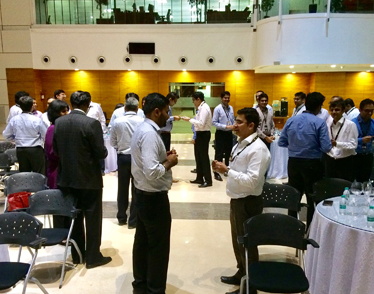
- Why it is important to build a personal brand?
- Building a brand that represents the unique aspects of you - building on your strengths.
- Developing the right skills
- Walking the talk
- Ace your game - Look the part
- Tailor your elevator pitch

- Power dressing.
- Current trends in Indian and international business dressing.
- Appropriate attire for conferences, formal and informal business meetings.
- Dressing for business related social events.
- Protocol vis-à-vis business dress decorum in India and abroad.
- Defining Business Casual and Friday Dressing
- The art of dressing with taste.
- Use of appropriate accessories – scarves, ties, belts, shoes, bags, briefcases, jewellery etc.
- Personal hygiene – skincare, hair care, after shaves, eau de toilettes’ and colognes
- Formal, multi course, sit-down dinners – protocol and procedures.
- Place settings and dinner placements.
- Buffet meals – the dos’ and don’ts’ of it.
- Use of crockery, cutlery, glassware, napkins, at formal and informal meals.
- Eating etiquette - practical session on eating with forks, knives, spoons, chopsticks and bowls.
- Finger foods – food that should be eaten with fingers.
- Eating Indian meals and etiquette related to it.
- Food habits in western countries
- Information on different foodstuff.
- Body language at the dining table
- Beverages – classification of alcoholic beverages. How they are served, and when and with what foods they are served.
- Toasting and protocol related to very formal invites.
*Note: The classroom session concludes with a very formal multi course sit down lunch /dinner at a fine dining restaurant where the participants will be able to master the practical aspects of the training in an enjoyable atmosphere.
- Factors that impact speech
- Pronunciation and speech
- Modulate voice to churn up emotions - comfort, motivate, provoke and inspire
- Changing the sound of sentences to grab attention.
- Know your volume.
- Learn about the speed at which a person should speak.
- Passion - adding colour, expression and feeling to a speech.
- Various exercises to polish enunciation and pronunciations of commonly mispronounced words
- How to make communication simple
- How to sound structured, confident and decisive
- Tips on speaking extemporaneously
- Power words and phrases
- The art of probing- asking the right questions to get desired responses
- Barriers to communications and gravitas blunders
- Interpersonal communication and rapport building
- Insights into the art of influencing people
- Understand the importance of asking the right questions to get desired responses
- Managing the verbal and non-verbal factors of communication
- Barriers to communications
- Effective listening
- The importance of the need to demonstrate positive listening during the communication process.
- How to listen in different situations – one on one, meetings, telephone calls, and con-calls.
- The Art of probing. Understand the importance of asking the right questions to get desired responses
- Getting total clarity on the task to be completed to avoid repetition of work.
- Barriers to communications
- Elevator speeches in different settings - Participants learn to introduce themselves, their service, company, product and its value add in a short and concise manner and practice the art of effective sales pitches in different situations.
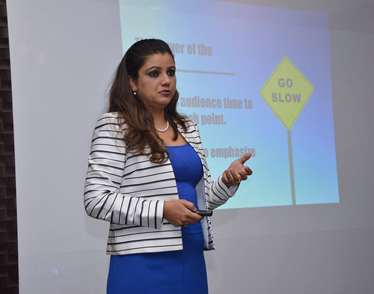
- Business Letters and Report Writing:
- Effective reporting – process and principles
- Types of reports
- Reporting styles
- Presentation tips
- Grammar basics and common errors
- Indianisms v/s proper English
- How to agree and disagree politely

- General office courtesies ( elevators, visitors, washrooms, cafeterias etc)
- Cubicle Etiquette
- Meeting Etiquette
- Success and politeness indicators
- Constructive criticism
- Team work and communication
- Diversity and Gender sensitivity at the workplace
- Maintaining appropriate and friendly disposition towards opposite sex colleagues.
- Chivalrous and courteous behaviour towards lady colleagues
- Off site and office parties.

- Importance of international manners and etiquette
- The Global Ambassador – appearance, public behavior and communication.
- Art of conversation in a social gathering, with Asians, Europeans, Americans, Africans etc
- Historical/Geographical background of target culture
- Customs and traditions
- Taboo Subjects
- Perceptions, stereotypes and expectations of target culture
- Country specific information on the do’s and don’ts of business etiquette.
- Invitations and response
- Faux pas and other situations
- Punctuality and approach to time
- Simple greetings and expressions in other languages
- Appropriate gift giving
- Dealing with a VIP - when a director or a CEO visits overseas-etiquette related to specific countries
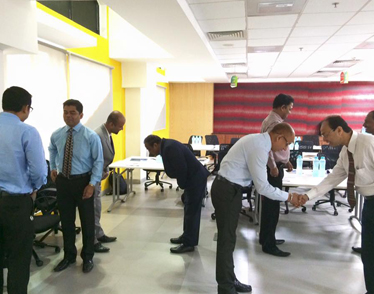
- Delivering captivating presentations with ease
- Creating powerful presence and powerful openings
- Insights on quick rapport building and how to connect with all audiences instantly.
- Engaging the audience with light humor and discreet interaction.
- Modulating voice and gestures to churn up emotions.
- Various verbal exercises to polish enunciation and pronunciations
- How to leave the listener enthralled and inspired to take action.
- Eliminating monotone and boredom
- Eliminating "Overkill"
- Monitoring and managing audience reactions precisely.
- Live video recordings and replays. Discussion on how the speech pattern, diction and body language can be improved upon to make a dynamic presentation
- Self-assessment on elevator speeches and identifying individual areas that need improvement.
- Common presentation bugs (content, communication, body language)
- Managing physical and mental stress during presentations
- Understand cause of nervousness and how to overcome the same to be a confident presenter
- Presenter’s conduct during Q&A. Controlling question and answer sessions
- Delight your audiences with compelling visual presentations
- Design and create clear and compelling slides
- Become more efficient – create better slides more quickly
- Structuring powerful slides for impact and total influence
- Organizing content
- Ensure your design is clear – with the right fonts, contrast, and colours for display when projected, displayed on a big screen, or shown on a tablet
- Use animation – including sophisticated animation – to tell your story effectively
- Work with templates and slide masters to promote consistency and impress your audience
- Create and edit live graphs and charts
- Build slides faster by using toolbars and shortcuts.
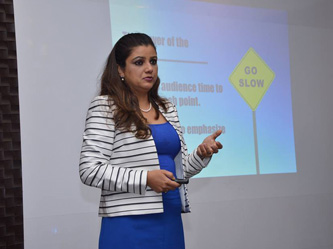

The objective of this workshop is for sales managers of the luxury goods market to understand what luxury is all about and get an insight into the lifestyle of a high-net-worth individual or an elite customer. There will be a talk on some trends in terms of where the wealthy are spending their money, the latest luxury brands in India, classic luxury goods , haute couture clothing, accessories, luggage, exotic automobiles, luxury hotels, butlers, prestigious sporting and social events, art collections, popular luxury destinations, cigar culture, wines and fine spirits, perfumes and transportation like limousines, private jets, yachts etc
- History of Golf
- Golf Ratings and the Handicap
- Equipment Needed
- Golf Attire
- Main Rules
- Golf Course layouts – Tees, Greens, Fairways, Sand Bunkers and Water Bodies
- The Caddy
- Understanding - Stroke Play, Match play, Foursome and Fourball
- Prestigious Golf Courses
- Club Memberships
- Top Golfers and Championships

- Telephone etiquette - Your Phone Voice, Greeting, Response, Alternative Dialogue / positive communication, Placing Callers on Hold, Transferring Calls, Taking Messages
- Voice Mail
- Mobile phone manners
- Speaker phone and Conference calls Etiquette
- Video conferencing Etiquette
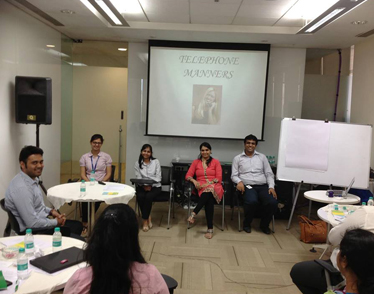
- Emails and net etiquette
- Social media manners – Do’s and Dont’s
- Instant Messaging manners
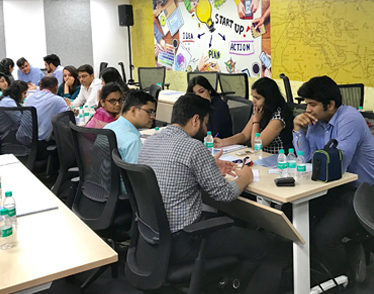
- Conduct expected at - Meetings. Board Rooms. Conferences.
- Selecting Participants
- Developing Agendas
- Organizing the physical environment and food
- Seating protocol – placing people correctly.
- Opening Meetings
- Establishing Ground Rules for Meetings
- Time Management
- Managing off Topic Discussions
- Evaluations of Meeting Process and Recap
- Closing Meetings
- Follow ups
- Team Meetings etiquette
- Build up a wardrobe that suits you, and you are comfortable wearing.
- Use apparel to bring out the positive aspects of your physical personality.
- Wear styles, cuts, fabrics, prints and colors that enhance your look.
- Develop your own ‘style’ of dressing, as opposed to blindly following fashions and fads.
- Maintaining an overall image suitable for different social and professional interactions
- Discover the best hairstyles and accessories for you
- Avoid common pitfalls
- Discover how to make the most of your own personal coloring
- The art of dressing with taste.
- Skin- care and Personal Hygiene
- Make up, Hairstyles and Saree draping for ladies (Optional)
EQ in many ways is the essence of being a progressive human. In several ways it is a driver for success and enhanced output and performance.
It has been observed that close to 70% of career derailers are due to inability to handle interpersonal problems; unsatisfactory decision making, incompetency in resolving conflicts and failure to adapt to change and elicit trust.
Your workplace and the 'world' is typically a melting pot of different personalities, skills, strengths and emotions. Hence EQ is intricately melded and acts as a catalyst into each and every decision and action within the melting pot – EQ competencies help you have an EDGE in doing so.
Emotions drive People and People Drive Performance.
- Abundant research shows that EQ has been shown to account for most of the success in business and in life.
- This curtain raiser talk is about how one can have a cutting edge in Professional, Personal and Social lives by integrating and actively practicing Emotional Intelligence skillsets and competencies.
- Well acknowledged by fortune 500 companies.
- Adopted by progressive MNC for their advancement.
- The Ivy leagues colleges have recognized its importance.
- HBR has featured multiple articles on EQ /EI.
In the 'real market' IQ contributes towards 20% of your successes, Whereas EQ contributes 80%. It is a major success predicator.
These skillsets are the one which sets you apart for, making right choices, appropriate decisions, increased influencing abilities, creating excellent relationships, reducing stress and generating a mechanism to enhance resilience.

Most working professionals have difficulty balancing their multiple roles and more than half worry that they do not have enough time for themselves.
An organization’s success is largely dependent upon the health of its workforce. Balance brings health and success and a healthy balanced workforce is a healthy, successful organization.
The purpose of these webinars is to facilitate a discussion about balancing work responsibilities with life responsibilities. In addition to outlining major causes of imbalances, these sessions will examine healthy, positive approaches to accomplishing balance across life, including relationships and personal success.
Finally, these webinars will provide opportunities to practice ways to improve management of time, priorities, and commitments during their career.
Building the Positivity Muscle:
A workshop that breaks down negative thinking and negative emotions - fear, anger, guilt, shame and pain. Through this session, participants will be able to truly understand what "being happy" or "being positive" entails; they will be able to flip their negative self-talk; and learn to look at situations from a positive lens.
Overcoming Anxiety:
Understanding and learning key mindsets and tools to tackle and overcome anxiety
Circle of Emotions and How to Communicate Effectively:
This webinar is about understanding and processing our 5 negative emotions - fear, anger, guilt, shame and pain. Through this workshop we break these 5 emotions down and share effective tools to process them and respond appropriately. This part of the session is full of perspectives and provides tools for working women to grow and build.
There are some key obstacles we create by way of speaking and reacting. Changing our language and tone by first understanding the underlying emotions and governing thoughts can be a game changer. We can learn to communicate our feelings and thoughts effectively.
Befriending the Inner Critic:
This 90 min workshop is about dropping judgments and building conviction. It is judgment and the inner voice that says, "I am not good enough" that erodes our sense of self and often leads to anxiety and depression.
This workshop helps you identify that voice and its words; we learn to identify and focus on our strengths while choosing to work on what we see as "flaws" from a space of acceptance and growth.
The Balancing Act:
This 90 min workshop is about understanding what it takes to live a full life and well, what does a full life look like in the first place. Through simple writing exercises we help attendees see, register and anchor their individual selves as the center of their lives instead of making it all about a career or then a relationship.
We also help them jumpstart a process of identifying their values and belief system while creating a one line brief of evolution and growth for their individual selves.
Goal setting:
Understanding the difference between wants and goals. This workshop teaches participants to set value-based goals and breaking it down into a doable plan of action using the power of intentions and the practice of 'break it down to build it up'.
The Willingness Effect:
This 90 min workshop is the next step of the above Vision Board and Goal Setting workshop. Why is it that we set goals, work towards them and yet fall short? Because success needs more than capability. It requires a willingness - to do what it takes, to go the distance. This workshop helps participants understand their willingness quotient for their goals and identify what needs to change or what more do they need to learn to succeed.
We also go a step further and understand that every goal and desire demands a version of ourselves. It is this version that we identify and begin to create through simple exercises.
The 4 steps to change:
A workshop in which participants learn an Awareness to Action formula to create the change they wish to experience. Understanding what we need to change, why we need to change and how we can change is a full-circle process. Many of us think about or go through the process of change in pieces and hence fail to succeed. This simple formula helps build the right mindset an individual needs to build powerful habits and create lifestyle shifts.
The 3 Cs of success:
A workshop that teaches participants the 3 Cs - clarity, conviction and consistency - needed to succeed. Simple perspectives and tools that can help participants communicate effectively and also move forward towards their goals efficiently.
The keys to productivity:
- overcoming procrastination
- moving from overthinking to organised thinking
- taking responsibility and understanding accountability
- being empowered instead of entitled
- learning to meditate
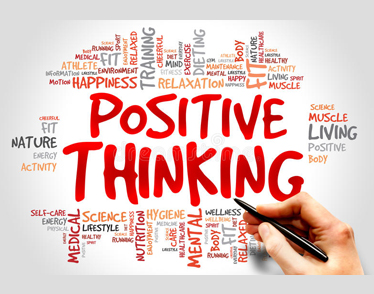
Note:
- An observation and analysis of a typical day will be done by the trainer before commencing to evaluate what the client wants and needs, and to ensure that the progress is in line with their personal style expression and lifestyle.
- All or only a few of the above topics / subjects will be prepared into a customized programme that is most relevant to your company and staff.
Our Training Categories
2168
Trainings
321
Clients
42757
Participants
34
Work Experience in years

